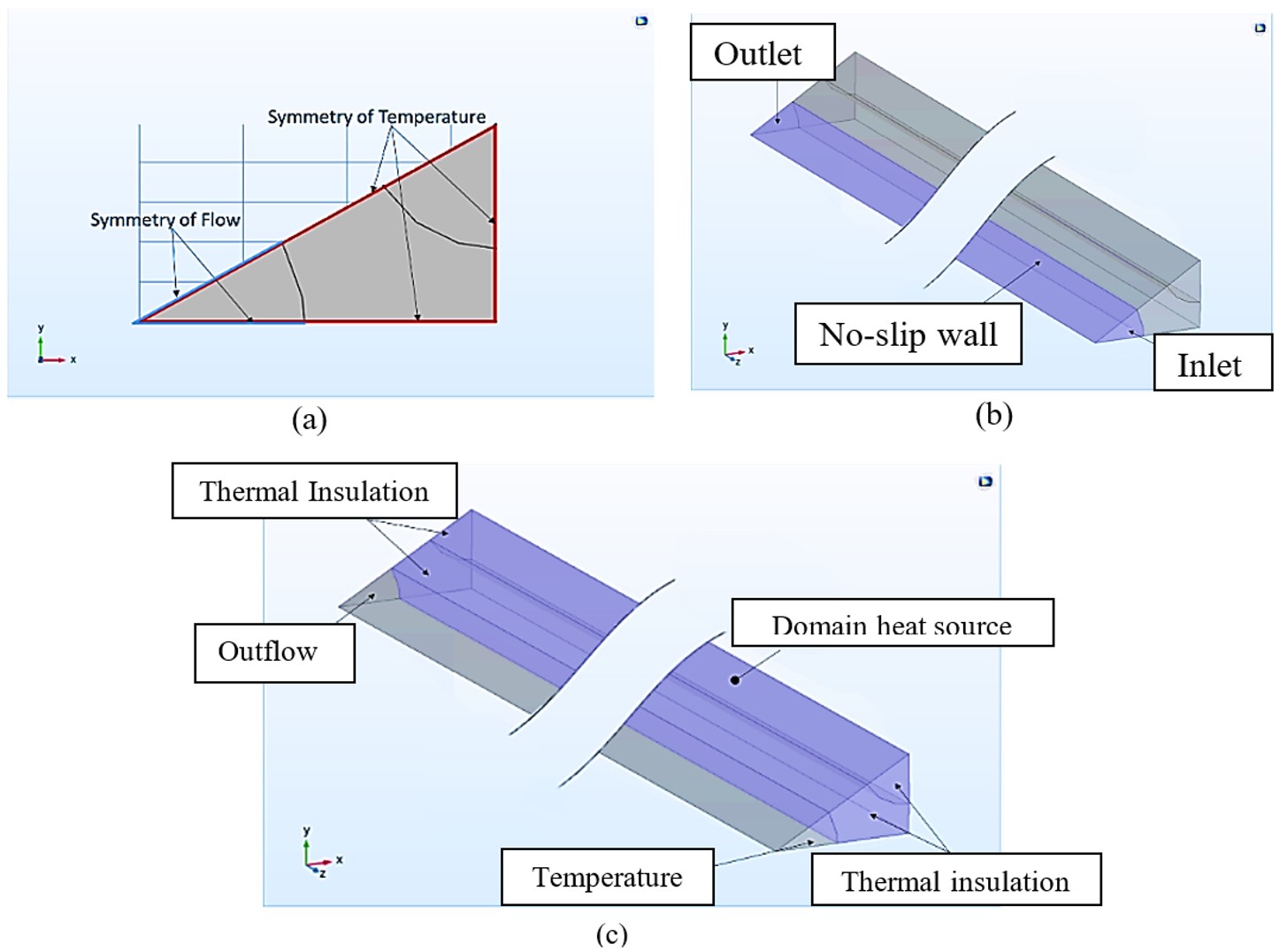Numerical simulation and parametric study of very high-temperature gas-cooled reactor (VHTR) fuel assembly
Main Article Content
Abstract
The very high-temperature gas-cooled reactor (VHTR) is a Gen IV nuclear reactor that has been developed from the high-temperature gas-cooled reactor (HTGR) with the aim for higher thermal efficiency and high-temperature process heat applications. There are two types of VHTR fuel assembly: prismatic block and pebble bed types. The prismatic VHTR have two designs consisting of multi-hole and pin-in-hole configuration. This paper focuses on the heat transfer enhancement and flow characteristics of fuel assemblies of the multi-hole prismatic block type that uses helium as a coolant. The pitch’s size and the inlet velocity of coolant are the parameters of interest in this study. A detailed thermo-fluid analysis using Computational Fluid Dynamics (CFD) and Finite Element Analysis (FEA) are performed by using COMSOL Multiphysics software. Various physical modules in COMSOL e.g. Heat Transfer in Solids and Fluids and Turbulent Flow (k-ε) are used together to analyze the heat transfer and fluid flow in a multiphysics approach where several important parameters of each module are linked and evaluated simultaneously through the multiphysics function. The thermo-fluid performance of a multi-hole fuel assembly shows that the variation of assembly pitch results in an increase in the average temperature of the graphite moderator and the fuel rod; however, it has minor effect on the temperature and the velocity of the helium coolant. Finally, increasing the pitch’s size could reduce the pressure drop by up to 1.5 kPa. In addition, the inlet velocity has a strong impact to the temperature profiles. When the velocity increases; the temperatures of the coolant, the moderator, and the fuel rod decrease accordingly. However, it has a negative impact on the pressure drop as the pressure drop could go up to 40 kPa at the inlet velocity of 40 m/s.
Article Details

This work is licensed under a Creative Commons Attribution-NonCommercial-ShareAlike 4.0 International License.
This work is licensed under a Creative Commons Attribution-NonCommercial-ShareAlike 4.0 International License.
References
GEN IV International Forum. Very-High-Temperature Reactor, URL: https://www.gen-4.org/gif/jcms/c_9362/vhtr, accessed 22/06/2020, 2020.
Tak, N.I., Kim, Y., Choi, J.H. Lee, W. J. Thermo-fluid investigation on a double-side-cooled annular fuel for the prismatic very high temperature gas-cooled reactor, Nuclear Engineering and Design, Vol. 238(10), 2008, pp. 2821-2827.
Lee, S.N., Tak, N., Kim, M.H. Fuel temperature prediction using a variable bypass gap size in the prismatic VHTR, Nuclear Engineering and Design, Vol. 300, 2016, pp. 578-590.
Kanjanakijkasem, W., Wang, H., Dominguez-Ontiveros, E., Hassan, Y.A. Experimental and CFD studies of the bypass flow in a prismatic core of VHTR using a small-scale model, Progress in Nuclear Energy, Vol. 91, 2016, pp. 223-235.
Wang, L., Liu, Q., Fukuda, K. Numerical solution of heat transfer process in a prismatic VHTR core accompanying bypass and cross flows, Nuclear Engineering and Design, Vol. 307, 2016, pp. 275-283.
El-Genk, M.S. and Tournier, J.M.P. Reliable and safe thermal coupling of generation-IV VHTR to a hydrogen fuel production complex, Thermal Science and Engineering Progress, Vol. 3, 2017, pp. 164-170.
Lee, J.H., Cho, H.K., Park, G.C. Development of the loss coefficient correlation for cross flow between graphite fuel blocks in the core of prismatic very high temperature reactor-PMR200, Nuclear Engineering and Design, Vol. 307, 2016, pp. 106-118.
National Institute of Standards and Technology. Thermophysical Properties of Fluid Systems, URL: https://webbook.nist.gov/chemistry/fluid/, accessed 03/07/2020, 2018.
McEligot, D., Swank, D.W., Cottle, D.L., Valentin, F.I. Thermal Properties of G-348 Graphite, 2016, Idaho National Laboratory, United States.



